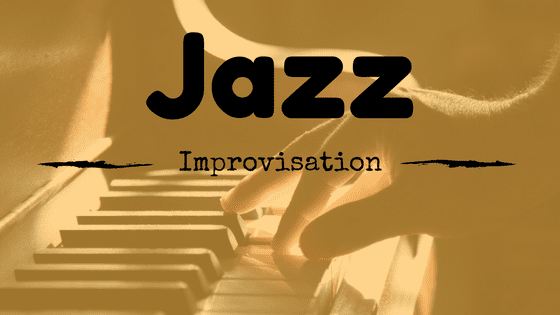Jazz Improvisation Tutorial

This jazz improvisation tutorial features one of the all-time most requested and recorded jazz standards - "Autumn Leaves" written by Joseph Kosma way back in 1945. The song continues to be a favorite among jazz players and audiences today. In this article we'll take a closer look at the chords of the 'A' section and explain how to think about improvising over them.
Jazz Improvisation Tutorial - Breaking Down the Chords
Let's say you're working on soloing over the 'A' section of this tune (the first 8 measures, which repeat). At first glance it looks like a lot of chords, right? One chord per measure, so every four beats you encounter a new chord.
Some players (and teachers, and books, and jazz theory classes, etc), look at these chords as requiring a new chord scale for each new chord (a "chord scale" is a scale that corresponds to a particular chord, making it a great scale to choose when improvising over that chord). So you might get a very dense and confusing answer like this:
"For Am7 you can solo using an A dorian chord scale, for D7 a D mixolydian scale, for G major a G ionian scale, for C major a C lydian scale, for F#m7b5 an F# locrian scale, for B7 an E harmonic minor scale starting on B, and for Em an E aeolian scale."
WOW! That's a mouthful to say AND to write. The chord scales mentioned above (referred to as "modes") are accurate, and in the hands of a good player will sound really good when used for soloing. But, there is an easier an to break these chords down.
Jazz Improvisation Tutorial - An Easier Approach
Let's remember that almost ALL of these chords are found in the key of G major. These chords (below) are referred to as diatonic chords because they are all found in the key of G major.
Why is this important? Because if these chords are all built by using only the notes from G major, then we can solo over ALL of them using just one scale - G MAJOR! Why try to remember 7 different chords scales and their names when all 7 of those scales are simply a G major scale that starts on a different note? For example, A dorian is just a G major scale starting on A. And an F# locrian scale is just a G major scale starting on F#.
Jazz Improvisation Tutorial - One "Outlier" Chord
There is one chord in the progression (B7) for which a G major scale is not the best choice when improvising. Why? Because a crucial note in a B7 chord is the D# (the 3rd of the chord) and D3 is not found in a G major scale. We need to make sure we have a scale to play that includes the D# when soloing over B7. We can simply play a G major scale with a raised 5th, which is the same as an E harmonic minor scale. That's it, just change that one note and now we have a scale that "works" over B7.


